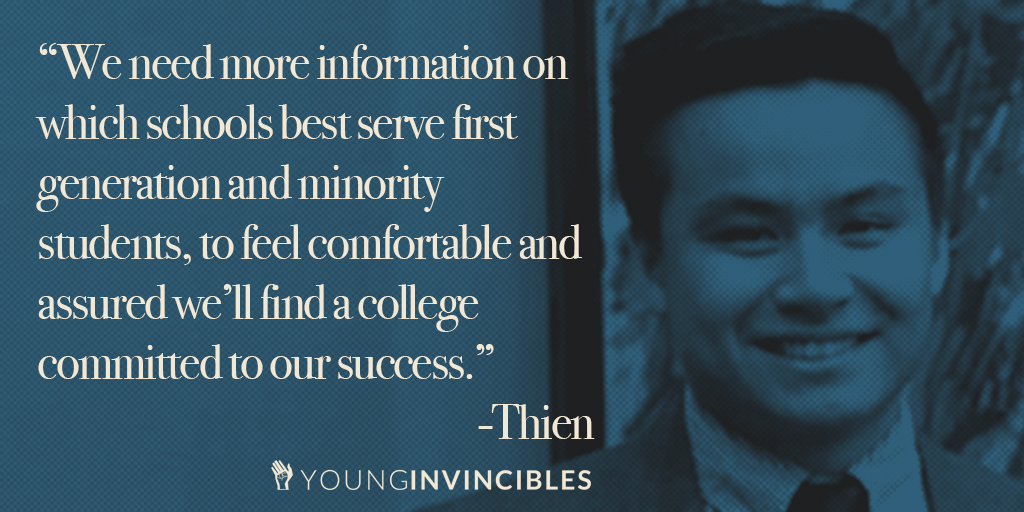Students today have a vast amount of options for where to obtain an education, which allows us a lot of flexibility in finding schools of different sizes, cost, and locations. It’s a great advantage for some, but can create quite a lot of stress if you aren’t exactly sure how to assess which school will set you up best for post-graduation success. Students, especially those from underserved or underrepresented backgrounds, need data that clearly explains graduation and career success rates for people like them. In order to create a generation of leaders and innovators, today’s students need to make more informed decisions on which paths will lead them there.
I aspired to become a lawyer since I was 14, so I was lucky to already have an idea of which programs would help me reach my goals. This didn’t necessarily make shopping for colleges easier, though. High school advisers and parents can be great resources to students struggling with higher education decisions, but I’m a first generation college student from a non-English speaking family, and there was not a lot of advice to go around. Most of my decisions were made through my own independent research. While my high school adviser was helpful in directing me to scholarship opportunities, I was essentially on my own to pick the right college.
As a 17-year-old, I did not have nearly enough knowledge of federal loan programs, extra college fees, trends in increasing tuition costs, or credit transferability to make the best possible decision when considering the investment I was making in paying for school. Institutions of higher education sometimes provide a cost calculator on their websites and some even provide financial aid estimators. These tools can be helpful in estimating front-end costs, but they do little to educate on what life after graduation, or dropping out, would bring. It only takes a few clicks for a student to receive thousands of dollars in loans, but some can end up repaying them for decades afterward. Once on campus, students have a lot to manage — jobs, internships, community involvement, all on top of classes — so often times learning about our interest rates, repayment options and potential loan forgiveness programs come as a harsh reality after graduation. Colleges need to be more transparent when advertising their costs by also informing prospective students on the costs that go along with repayment.
It can be an even higher stakes situation for students with backgrounds similar to my own, who may not have family or community resources, may need extra support, and may not be native English speakers. We need more information on which schools best serve first generation and minority students to feel comfortable and assured we’ll find a college committed to our success. A college campus can be a very unfamiliar environment when you don’t have family members to help navigate the strange new setting. Students from similar backgrounds already on campus can be a huge resource to prospective students, as they understand the struggles and can help provide guidance. But that alone isn’t enough. Sharing simply the number of minority students at a given school doesn’t tell us about the community we may be joining. Our institutions of higher education need to paint a more accurate picture of their minority communities, and the rate of success of those communities experience after graduation, including how prepared they are for the workforce. It’s a great resource for some of us, who are not used to asking for help and may let ourselves fail out of college before mentioning anything to anyone, but it’s frankly not enough.
I can’t speak for every low-income, first generation, minority college student in America, but I know these words resonate with a lot of my peers. While we know we need to take the reigns of our own success, we need to be empowered to do so, and it is clear that there is a lot of information that needs to be made available before students can make a decision that will impact the rest of their lives and those close to them. What we need right now is better data, more of it, and to have it in a transparent and easily digestible form.
Thien is a graduate of the University of Nebraska – Lincoln with degrees in Political Science and Environmental Studies. He served as UNL student body president and pursued increased state funding for colleges with the student government. He has also worked with the National Campus Leadership Council to advocate for college affordability on a national level.

